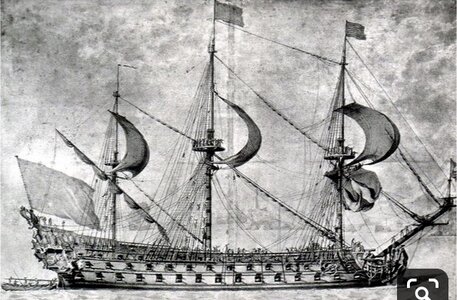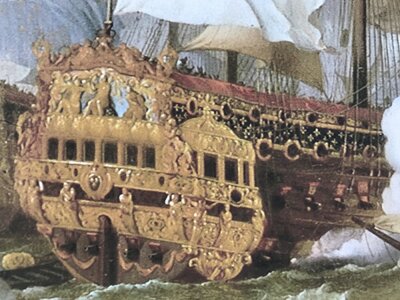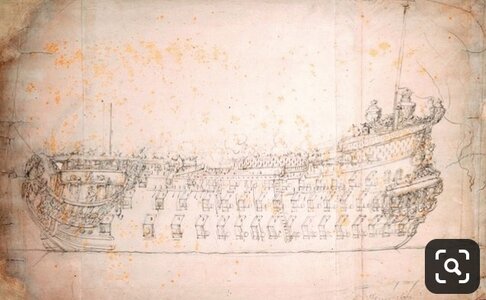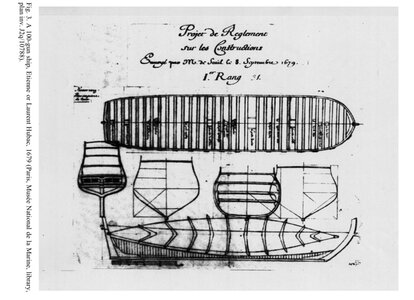When I first found this thumbnail, over five years ago, I didn’t know what it represented, nor who painted it, however, I had a strong sense that whatever was there was important.
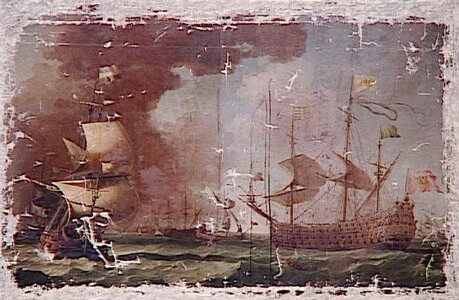
Having finally located the portrait, I decided to treat myself to an early birthday present. Fifty dollars yielded a super high-resolution (pixelation is 9,528 x 6,489) digital file of this portrait. I was correct. There is, indeed, something of great significance, here.
To begin with, the portrait was painted by the renown Dutch marine artist Jean Karel Donatus Van Beecq. His early career spans from 1672 - 1681, when he left France for England, at the invitation of Charles II who wanted to encourage Dutch marine artists to expatriate. Although the Van de Veldes dominated the patronage scene, during this time, Van Beecq was also highly regarded for his technical mastery and his lively color palate. He was no slouch:
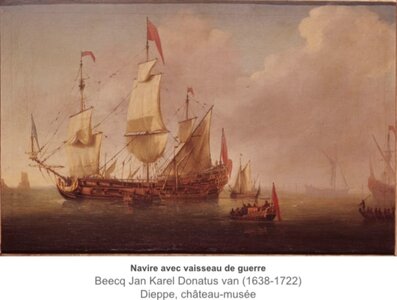
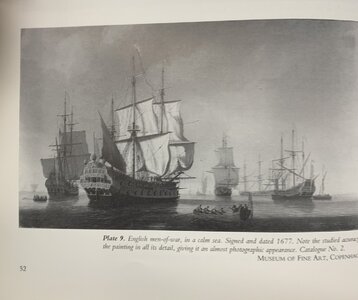
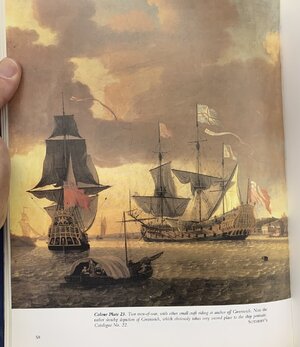
And, his best-known and most brilliant portrait of the Royal Prince:
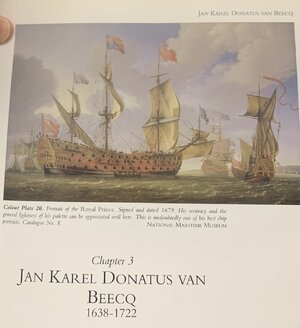
Well, it turns out that it is Van Beecq, to whom this mystery portrait is attributed, and despite the horrendous damage to the portrait, you will soon see the many parallels to his other, better known work.
I can only guess that this portrait - clearly of a French First-Rate - was done before he left for England. On the other hand, it may have been done upon his return to France, where he benefited from the patronage of his friend, the Duc de Vendome.
And so, without further ado, I present to you Le Royal Louis of 1668, at some point in her early career between 1668 and 1677, as seen through the eyes of Van Beecq:
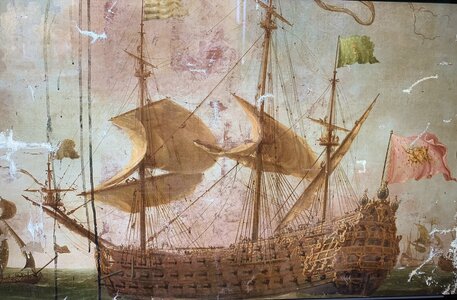
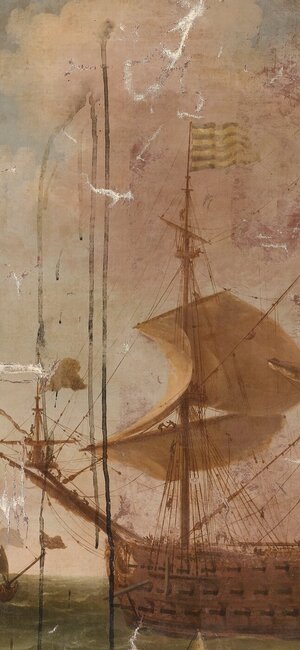
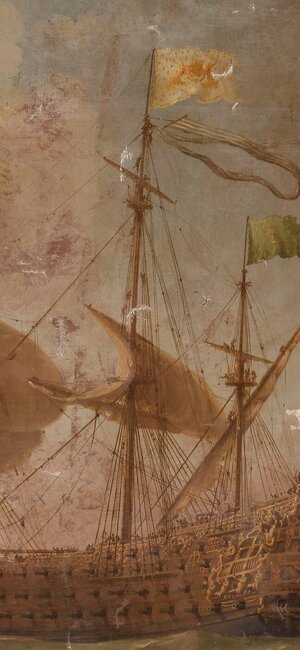
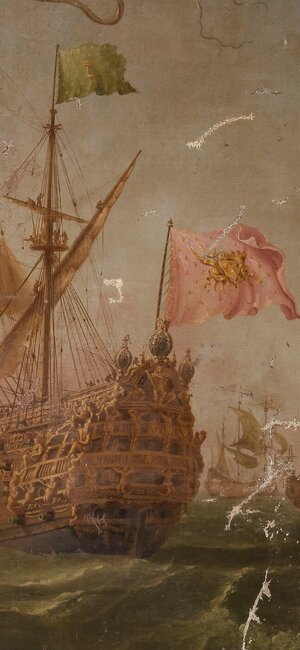
Of course, my hope was that this portrait would reveal itself to be Soleil Royal. I am not the least bit disappointed, though! The reasons for this are several. From a dimensional standpoint, the RL 1668 and SR 1670 are only nominally different, with SR being slightly longer overall (1.5 French pieds), and with a deeper draft (1 pied). Their breadth is the same, though, at 44 pieds.
Given that, I think there are reasonable grounds to assume that Soleil Royal 1670 would have had a similar “presence” on the water, sheer plan, distribution of armament, and underlying structure for the stern and quarters.
The chief differences would be a lesser profusion of monumental figures for SR, and the defining allegory would be very similar to Berain’s re-working of Puget’s original design.
Make no mistake - any future attempt I make at representing SR 1670 can only by its very nature be a product of conjecture and artistic interpretation, within the known dimensional parameters of the ship. I am more confident than ever, though, that I can accomplish this with a high degree of fidelity to the artistic sensibilities of the time.
So, why am I so certain this is the Royal Louis? Well, the main reason is the profusion of guns, if not their exact number and distribution. Also, and just as importantly, the known allegory of the RL is very much in attendance, and overall - while their are certain key differences between this portrait and the Hyatt monograph, which do correlate in certain aspects more directly to the Vienna portraits, the important elements agree really very closely to this portrait.
I am excerpting a German to English translation of Hyatt’s monograph from the excellent
Versailles de Mer. German to English translates more coherently than French in Google Translate. Within the text, I have inserted [..], where I attempt to clarify what specific element or area is being referred to. In a few instances, here, I am guessing a bit, and welcome any insight. Also interspersed between paragraphs are my notes in italics.
___
ABOUT THE SCULPTURES
Presentation of the transom of the ROYAL LOUIS.
The large transom is richly decorated on the outside with laurel leaves, garlands and shells underneath, all in perfect gilding [lower transom]. Above are a seahorse on each side and four large brackets supporting the first battery [lower stern balcony]. Underneath there is a very beautiful pendent decorated with foliage [covering the jaumier, or tiller opening].
This description corresponds very closely to LeBrun’s drawing, and Van Beecq’s portrait, as well:
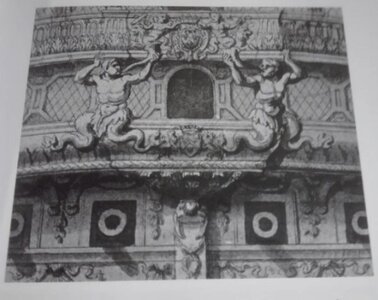
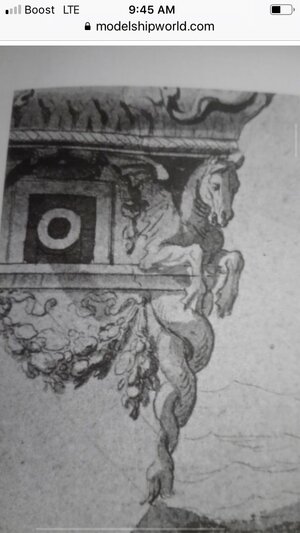
The first gallery at the level of the support is covered with gilded Bourbon lilies. On it [the gallery] sit four sirens who serve to support the second gallery. On the sides [quarters] are three sea gods and two consoles, as well as an all-encompassing frieze [middle balcony/main deck level]. On it are the coats of arms of His Eminence the Duke of Beaufort, also supported by two sea gods holding an anchor.
The arms of Beaufort do not appear to be present on either Van Beecq or the Vienna portraits. Only on LeBrun are they shown, and in that instance they appear on the lower stern balcony. The fleur-de-lis do not appear on LeBrun or Van Beecq, yet they are apparent on the starboard quarter portrait of the Monarque:
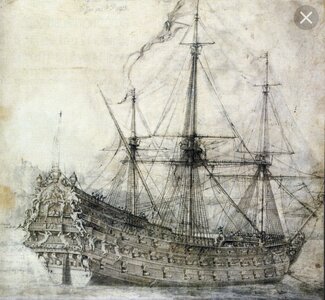 Any, yet, not on the port quarter of the same
Any, yet, not on the port quarter of the same:
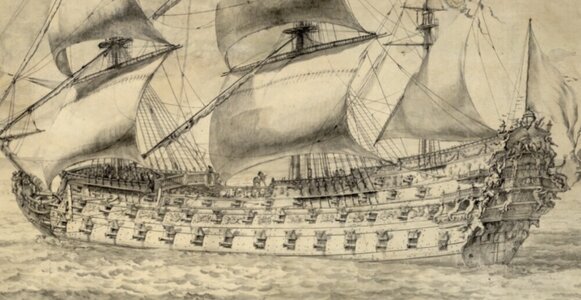
Next to them sit Neptune on the starboard side and Thetis310 on the left with a Cupid at their feet offering the aforementioned deities the treasures of the sea and the earth. These in turn are offered to the figure of the king seated on the throne of justice above the third gallery.
In this aspect Hyatt agrees with the Vienna portraits, while Lebrun and Van Beecq have Neptune and Thetis reversed.
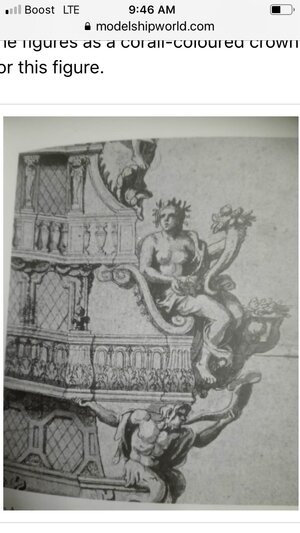
The entire stern is in the same gold relief, with a slave on each side and a gilded cornice running the length of the ship.
Along with trophies, everything adds up to the aforementioned gods. At the top of each corner is an allegory of renown with a trumpet. Above the second ledge on the portico, which gives the same impression as the other, sit two figures holding in their hands a laurel wreath on one side and an olive branch on the king's head on the other.
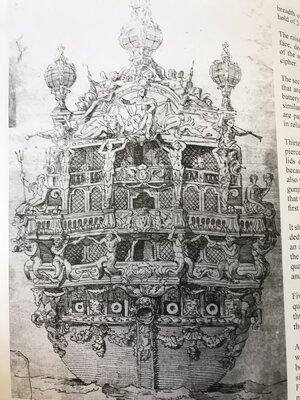 On these points, everyone agrees
On these points, everyone agrees.
On the third gallery there is a balcony projecting two feet where the king's arms are set in a medallion. On it are four capitals with four gilded half-figures representing the four continents.
All gunport covers are decorated with gilded Bourbon lilies, king's monograms, lyres and suns. And at a distance [above] from this arrangement of clasps described above, there is a gilded frieze between the mountain timbers [upper bulwarks?] which runs the entire length of the nave [upper bulwarks from Q-deck aft?] with also gilded intertwined Bourbon lilies.
This may, indeed, be what Van Beecq is showing just beneath the timberhead sheer railings.
Between the gunports of the second battery are gilded naval trophies, even with fiskers and anchors woven into them.
Here is an important variance where Hyatt is in agreement with the Vienna portraits. Van Beecq places these trophy carvings even above the main deck guns. I still do not think that negates my distinction between the Royal Louis and the Monarque, which I will explain more fully in a moment.
Those of the third battery are decorated with frames of foliage with griffins³11 on the sides, all finished in gilding.
It is not possible to discern what ornament Van Beecq has placed here, while on the Vienna portraits, the flanking figures are cherubs with triton tails.
On the highest mountain wood [poop royal level upper bulwarks] there are consoles, the spaces between which are golden Bridging garlands.
Clearly evident on Vienna portraits and not at all on Van Beecq.
The sides of the nave are richly decorated on the beams with gilded Bourbon lilies and mouldings. The entire mirror - in other words, the patron saint of this ship - is painted in blue and dotted with golden Bourbon lilies.
This is one important detail where Van Beecq stands apart from all the other representations.
I am always worried I might lose a really long post, so I am going to post this much, before continuing with a few observations…





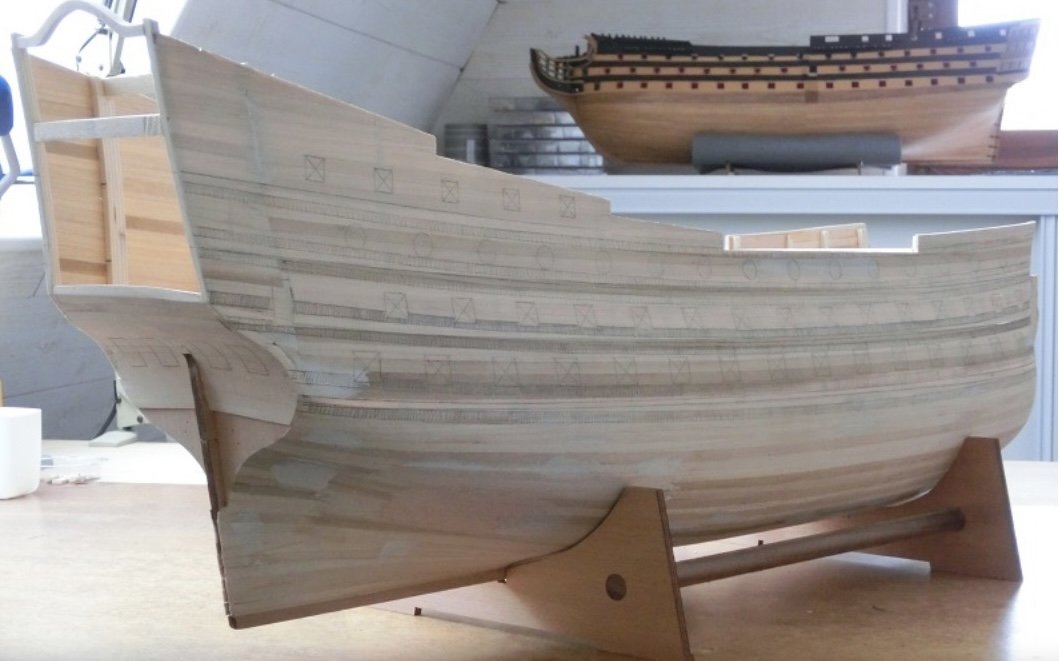


















 , so, here are my thoughts.
, so, here are my thoughts.